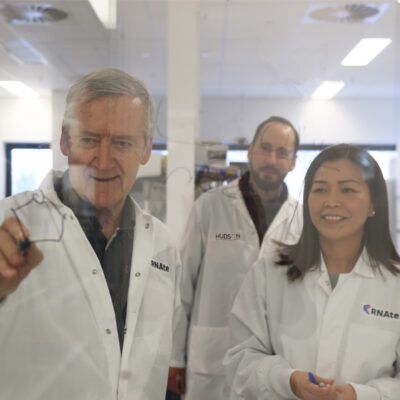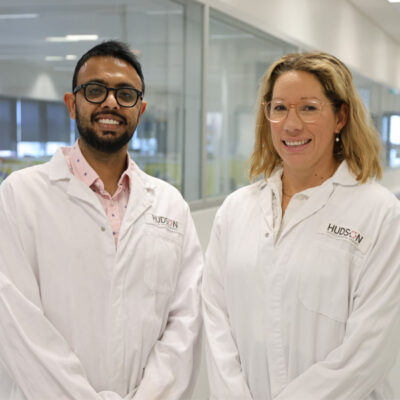Key to immune system inflammation discovery
By Hudson Institute communications. Reviewed by Associate Professor Daniel Gough
Hudson Institute scientists have discovered the key to how cells turn on inflammation and fight infection, providing the knowledge to potentially reduce or stop destructive immune system inflammation in the future.
The finding comes as the world finds itself in the grip of the SARS-CoV-2 viral pandemic, where raging inflammation caused by the body’s overwhelming immune response in some individuals can lead to death and debilitating ongoing symptoms.

“Inflammation arising from our own immune system response is now recognised as an underlying component of almost every disease,” said A/Prof Ashley Mansell co-author of the study published in Nature Communication. “This includes heart, lung, brain and infectious diseases, cancer, diabetes and chronic kidney, liver and autoimmune diseases.
“If we could reduce dysfunctional or exaggerated inflammation in the immune system, we would reduce the suffering associated with these severe inflammatory diseases.
“Understanding how cells turn on inflammation provides the building blocks to do this, by potentially targeting these pathways to restrain or stop inflammation attacking the body.”
A/Prof Mansell said the immune system discovery was like “finding how turning a key in a car ignition tells the engine to start producing energy to turn the wheels”.
Understanding how immune cells drive inflammation
The study found that a protein called STAT3 plays a critical role in communicating signals from surface sensors on the cell (macrophages) , to the cell’s engine room– the mitochondria – that a foreign invader has been identified.

This reprograms the mitochondria to kick-start energy production and usage to generate inflammation, said co-author Dr Dan Gough. “When an immune cell detects an infection, like bacteria, it rapidly changes its metabolism from a resting to an inflammatory state,” Dr Gough said.
“This provides the energy and building blocks to produce chemicals called cytokines, which fight off the infection. This metabolic or energetic ‘switch’ occurs in the engine room of cells – the mitochondria,” he said.
Hudson Institute Director, Professor Elizabeth Hartland said the discovery was pivotal to understanding how certain immune system cells adapt their metabolic activity to drive inflammation.
“There has long been a gap in our knowledge of how macrophages take a signal from the cell surface and translate it to the mitochondria. Now, thanks to the work of our inflammation scientists at Hudson Institute, we have an answer to that question,” said Hudson Institute Director, Professor Elizabeth Hartland.
“This missing link is pivotal because it gives us a deep understanding of the signalling events in our immune system’s first line of defence – the inflammatory process. This discovery has big implications for further research into treatments for a wide range of inflammatory diseases.”
Collaborators | University of Bonn, University of Massachusetts
Journal | Nature Communications
Title | STAT3 serine phosphorylation is required for TLR4 metabolic reprogramming and IL-1β expression
View publication | https://doi.org/10.1038/s41467-020-17669-5
In this article
About Hudson Institute
Hudson Institute’ s research programs deliver in three areas of medical need – inflammation, cancer, women’s and newborn health. More
Hudson News
Get the inside view on discoveries and patient stories
“Thank you Hudson Institute researchers. Your work brings such hope to all women with ovarian cancer knowing that potentially women in the future won't have to go through what we have!”





